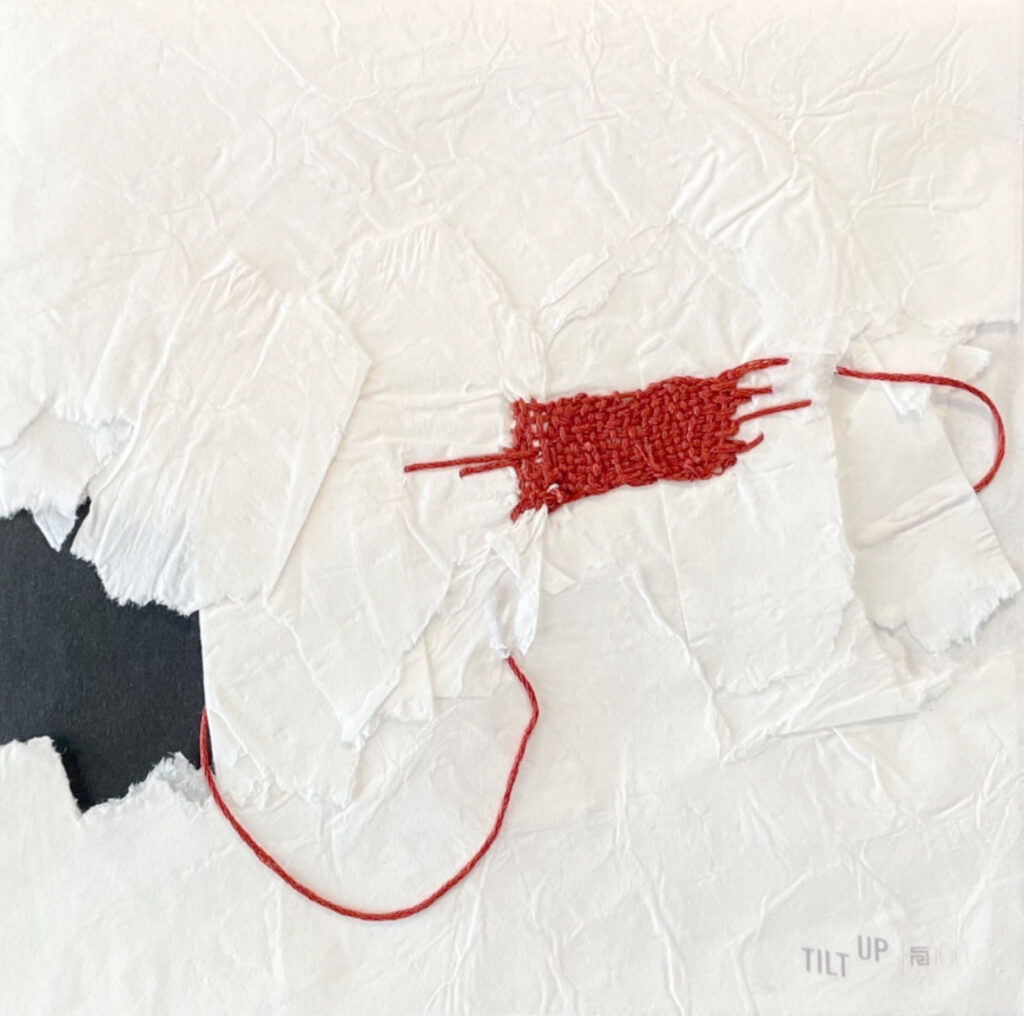
In December of 2022, the award-winning poet and scholar Linda Dove purchased a napkin sketch designed by Annie Chu as part of the Schindler House “Tilt Up” fundraising event. Inspired by Annie’s creation, Linda penned the following poem, “The End of Any Napkin Is a Map,” which we are pleased to share with you now (with Linda’s permission).
The End of Any Napkin Is a Map
The term “map” derives from Latin “mappa,” a word meaning in antiquity a napkin. – Alfred Hiatt
(based on a work of napkin art by Annie Chu in the “Tilt Up” show for Schindler House)
Here is a paper napkin,
white as scrim
with a loop of red thread
anchored to a patch of stitch—
an attempt to hold
things together. The floss pulls
on the paper, pleats it
into topography,
the way hills wrinkle land.
What are we trying to save?
a hole
Out of the missing piece,
the thread winds
with direction. It weaves
under the layers,
grounds itself in the scarp
made from torn edges,
emerges as a placemat
or a scarf, a knit-back across
a hole
that we might understand
as a scab on skin—a map
of where we’ve been.
We improvise, repair, cosset
the scraps that are left.
We hold fast to
a hole
because it reminds us
of what isn’t there. We don’t want
to fall. We bind the world.
We corset and shim.
— by Linda Dove
Linda Dove holds a Ph.D. in Renaissance literature and teaches college writing. She is also an award-winning poet of five books, as well as a scholarly collection of essays, and writes and edits copy for Los Angeles artists. Currently, she serves as the faculty editor for MORIA, the national, online literary magazine at Woodbury University and reviews arts and culture events across the city for Cultural Daily.
About the napkin art, Linda says: “I am drawn to art that forefronts what’s missing, whether that’s a formal absence—as it is with the literal hole in this napkin art—or whether that’s content-based, as in a poem focused on loss. (I imagine this idea of what’s absent also interests me within architectural design.) I am fascinated with how we adapt to that hole, as the red thread adjusts this napkin and re-visions its missing piece. I remain incredulous that the words “hole” and “whole” are homonyms that also identify as antonyms—how can two words that sound exactly the same be used to indicate opposite states of being? I am interested in that confluence of language in the same way I’m interested in how the word “map”—which we think of as a representation of public space—originated in the word “napkin,” an item we associate with domestic space. They come from the same root, but they end up in opposite orientations of human experience. Finally, it was fascinating to me that this napkin design was created by someone whose expertise depends on understanding and interpreting interiority, which is one way I define what poets also do.